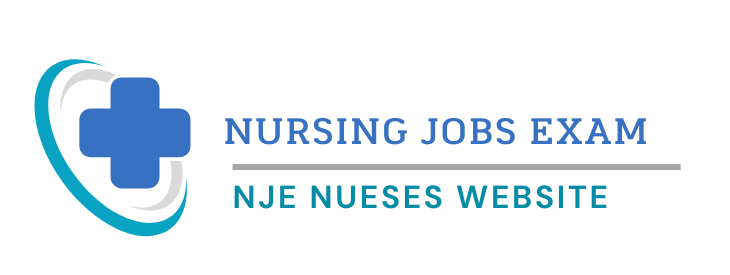Mastoiditis is an inflammatory process of the mastoid air cells or posterior process of the temporal bone, most commonly a suppurative complication of acute otitis media (AOM)
DESCRIPTION OF MASTOIDITIS
∎ Acute mastoiditis typically presents following AOM or may be the first sign of AOM. Symptoms are present for < 1 month.
∎ Subdivided into two stages.
➨ Acute mastoiditis with periostitis: involves the mastoid periosteum with purulence in the mastoid air cells.
➨ Acute mastoid osteitis (coalescent mastoiditis): destruction of bony septae separating air cells; leading to empyema and more serious head/neck complications.
∎ Subacute mastoiditis (masked mastoiditis): indolent process, may occur with insufficiently treated AOM.
∎ Chronic mastoiditis: due to failed treatment of chronic otitis media. Usually associated with cholesteatoma; symptoms last months to years.
EPIDEMIOLOGY OF MASTOIDITIS
∎ Children >adults.
∎ Most common in children <2 years of age.
∎ In children: males >females.
➨ Incidence is reduced after introduction of antibiotics but may again be increasing with rise of antibiotic-resistant Streptococcus pneumoniae. Introduction of PVC 13 vaccine may mitigate this rise.
CAUSES AND PATHOPHYSIOLOGY OF MASTOIDITIS
∎ Subclinical stage begins with AOM causing inflammation of mastoid air cells (likely present in all cases of AOM).
∎ Obstruction of the aditus ad antrum (connecting the tympanic cavity and mastoid).
➨ Blocks outflow tract of mastoid air cells.
➨ Oedema and accumulation of purulent material with penetration of periosteum (acute mastoiditis with periostitis).
∎ Increased pressure from fluid within the air cells leads to destruction of bony septae (acute mastoid osteitis/acute coalescent mastoiditis).
∎ Acute mastoid osteitis can spread to adjacent areas in head and neck with abscess formation:
➨ Subperiosteal abscess (most common complication), Bezold abscess, suppurative labyrinthitis, suppurative CNS complications.
∎ AOM: Haemophilus influenzae, S. pneumoniae
∎ Acute mastoiditis: Streptococcus pneumoniae (most common), Streptococcus pyogenes, H. influenzae, Staphylococcus aureus (including methicillin-resistant Staphylococcus aureus [MRSA])
∎ Chronic mastoiditis: Pseudomonas aeruginosa, S. aureus, Enterobacteriaceae, anaerobic bacteria, polymicrobials.
Genetics
∎ No known genetic pattern.
RISK FACTORS OF MASTOIDITIS
∎ Cholesteatoma.
∎ Recurrent AOM or chronic suppurative otitis media.
∎ Immunocompromised state.
GENERAL PREVENTION OF MASTOIDITIS
∎ Pneumococcal conjugate vaccine.
∎ Early referral to ENT for chronic otitis media.
∎ Appropriate diagnosis and treatment of AOM.
∎ Prevention of recurrent AOM.
∎ Treat chronic eustachian tube dysfunction (pressure equalization tubes).
∎ Identify cholesteatoma early.
DIAGNOSIS OF MASTOIDITIS
HISTORY
∎ Most common symptoms in infancy.
➨ Lethargy/malaise/irritability.
➨ Fever.
➨ Poor feeding/decreased appetite.
∎ Otalgia/possible otorrhea.
∎ Hearing loss.
∎ Headache.
∎ Pain/redness/swelling noted over mastoid.
∎ At the time of admission .
➨ 42% of children have history of otologic disease.
➨ 54% on antibiotic therapy.
➨ Average duration of symptoms: 10 days.
∎ Suspicion for mastoiditis increases when symptoms of AOM persist >2 weeks.
PHYSICAL EXAM
∎ Postauricular changes: erythema, tenderness, oedema, and/or fluctuance (81-85%) .
∎ Bulging, erythematous, or dull tympanic membrane (60-71%).
∎ Protrusion of auricle (79%).
∎ Fever (76%).
∎ Otorrhea if tympanic membrane is perforated.
∎ Edema of external auditory canal.
∎ Tympanic membrane (TM) can be normal in 10% of patients.
DIFFERENTIAL DIAGNOSIS OF MASTOIDITIS
∎ Postauricular cellulitis or inflammatory adenopathy.
∎ Severe otitis externa.
∎ Benign neoplasm: aneurysmal bone cyst, fibrous dysplasia.
∎Malignant neoplasm: rhabdomyosarcoma, neuroblastoma.
∎ Deep neck space infections.
∎ Parotitis.
DIAGNOSTIC TESTS & INTERPRETATION OF MASTOIDITIS
Initial Tests (lab, imaging)
∎ CBC with differential: increased WBC count.
∎ Elevated erythrocyte sedimentation rate (ESR) and C-reactive protein (CRP).
∎ Blood cultures.
∎ Myringotomy/tympanocentesis: Send for cultures, Gram stain, acid-fast stain.
∎ Mastoiditis is often a clinical diagnosis. CT confirms diagnosis and identifies regional complications.
∎ If obvious physical exam and/or historical findings are absent, temporal bone imaging is recommended for patients with cervical or postauricular findings.
∎ Plain radiographs of mastoid have low diagnostic yield but may show distortion of mastoid outline or clouding of mastoid air cells. These changes are not diagnostic and can also be seen in AOM.
∎ CT findings (97% sensitivity; 94% positive predictive value).
➨ Clouding/opacification of air cells (also in AOM).
➨ Mastoid air cell coalescence.
➨ Cortical bone erosion.
➨ Rim-enhancing fluid collections.
∎ CT of temporal bone with contrast helps identify suppurative extension.
∎ Technetium-99m bone scan is more sensitive to osteolytic changes than CT.
∎ Indications for CT scan in children.
➨ Neurologic signs.
➨ Vomiting/lethargy.
➨ Suspected cholesteatoma.
➨ Fever after 48 to 72 hours of therapy.
➨ Concern for local disease progression.
∎ MRI use increasing; may see increased fluid signal of mastoid air cells on T2-weighted MRIÑan incidental finding in the absence of clinical signs.
Follow-Up Tests & Special Considerations
∎ Interpret normal WBC with caution in symptomatic immunocompromised patients.
Diagnostic Procedures OF MASTOIDITIS
∎ Tympanocentesis to obtain middle ear fluid for culture and sensitivity.
∎ Myringotomy with culture (also therapeutic).
∎ Audiography if suspected hearing loss.
∎ Obtain CSF if intracranial extension suspected.
∎ Biopsy tissue protruding through TM or tympanostomy tube.
TREATMENT OF MASTOIDITIS
∎ IV antibiotics and myringotomy (± tympanostomy tubes) is the preferred treatment for uncomplicated acute mastoiditis (reflecting a shift away from more invasive surgical treatment).
∎ Simple mastoidectomy is recommended for patients not responding to treatment after 3 to 5days to avoid intracranial complications.
GENERAL MEASURES
∎ Inpatient care during acute phase for IV antibiotics.
∎ Keep the affected ear dry.
MEDICATION OF MASTOIDITIS
First Line
∎ Empiric antibiotics against most common organisms: Streptococcus pneumoniae (including multiple resistant strains), Streptococcus pyogenes, Staphylococcus aureus (including MRSA), P. aeruginosa
∎ Use combination therapy with 3rd generation cephalosporin (ceftriaxone or cefotaxime) plus clindamycin with additional coverage for resistant strains.
∎ Ceftriaxone 1 to 2 g IV q24h.
➨ Pediatric dosing: 50 to 75 mg/kg/day IV divided q12-24h.
➨ Precaution: Adjust dose with renal impairment.
➨ Clindamycin for coverage of ceftriaxone-resistant S. pneumoniae in pediatric patients.
➨ Clindamycin pediatric dosing: 20 to 40 mg/kg/day IV divided q6-8h.
∎ Cefotaxime 1 to 2 g IV q4-8h, depending on severity.
➨ Pediatric dosing: 100 to 200 mg/kg/day divided q6-8h.
∎ Add vancomycin 30 to 60 mg/kg/day divided q8-12h if concerned for MRSA.
➨ Pediatric dosing: 15 mg/kg/dose q6-8h.
➨ Precaution: Adjust dose with renal impairment.
∎ For patients with a history of recurrent AOM or recent antibiotic administration, treat with piperacillin-tazobactam 3.375 g IV q6h:
➨ Pediatric dosing: 300 mg/kg/day based on piperacillin component divided q6-8h.
∎ For other significant contraindications, precautions, or interactions, please refer to the manufacturer’s literature.
Second Line
∎ Oral antibiotics are given after 7 to 10 days of IV antibiotics and once myringotomy/blood cultures identify pathogen and sensitivities. Common oral antibiotics include:
➨ Amoxicillin-clavulanate (Augmentin) or clindamycin + 3rd-generation cephalosporin for 3 weeks or total treatment duration of 4 weeks
∎ For chronic mastoiditis: Use topical drops, ofloxacin otic solution (0.3%) or neomycin, polymyxin B, hydrocortisone three drops, 3 to 4 times per day
SURGERY/OTHER PROCEDURES OF MASTOIDITIS
∎ Perform tympanocentesis to obtain cultures and guide antibiotic choice.
∎ Myringotomy and tympanostomy tubes allow drainage of middle ear.
∎ Mastoidectomy is a definitive treatment for patients who fail to improve within 24 to 48 hours despite IV antibiotics and myringotomy and for those with meningeal or intracranial complications.
∎ Simple mastoidectomy is most effective for management of subperiosteal abscesses, if a trial of conservative therapy with drainage, myringotomy, and IV antibiotics fails.
∎ Clean ear canal under microscope to ensure pressure-equalization tube patency and adequate drainage of middle ear.
∎ Topical antibiotic drops usually used after insertion of pressure-equalization tubes.
INPATIENT CONSIDERATIONS OF MASTOIDITIS
Admission Criteria/Initial Stabilization
∎ Clinical or imaging evidence of acute mastoiditis.
∎ Hospitalize patients with acute mastoiditis and start IV antibiotics immediately.
Discharge Criteria OF MASTOIDITIS
∎ Afebrile for 48 hours before IV antibiotics are discontinued.
∎ Clinical improvement.
∎ Able to take oral antibiotics.





